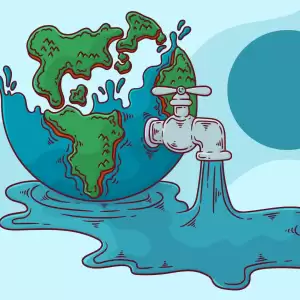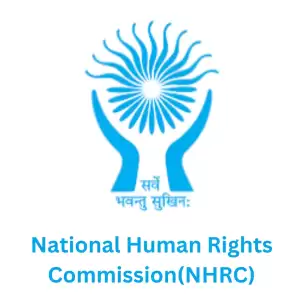
Environment Protection Act of 1986: A Comprehensive Overview
The Environment Protection Act of 1986 is a pivotal piece of legislation in India aimed at ensuring the protection and improvement of the environment. Established in response to growing environmental concerns and incidents of environmental degradation, this Act serves as a cornerstone of India’s environmental regulation framework. Here, we explore its key features, objectives, and impacts in detail.
Historical Context and Enactment
The Environment Protection Act was enacted on December 23, 1986, in the wake of the Bhopal Gas Tragedy of 1984. The disaster underscored the need for robust environmental legislation to prevent such catastrophic events and safeguard public health and the environment. This Act was introduced to address the lacunae in environmental governance and to create a comprehensive legal framework for environmental protection.
Objectives of the Environment Protection Act
The primary objective of the Environment Protection Act is to ensure the protection and improvement of the environment. It aims to:
– Prevent Pollution: The Act provides a legal basis for preventing and controlling pollution by regulating activities that may have adverse effects on the environment.
– Promote Sustainable Development: It encourages sustainable development practices that balance economic growth with environmental preservation.
– Enhance Public Health: By controlling pollution and hazardous substances, the Act seeks to protect public health and ensure a safe living environment.
– Facilitate International Cooperation: The Act aligns with international environmental standards and agreements, facilitating cooperation with global environmental initiatives.
Key Provisions of the Act
3.1. Definition of Environment
The Act defines “environment” broadly, encompassing the physical, chemical, and biological components of the Earth, including air, water, land, and all living organisms. This comprehensive definition ensures that all aspects of environmental protection are covered.
3.2. Powers of the Central Government
The Act empowers the Central Government to take necessary measures for environmental protection, including:
– Formulating Policies and Plans: The government is authorized to formulate policies and plans for environmental conservation and management.
– Issuing Notifications and Directions: It can issue notifications and directions to implement environmental standards and regulations.
– Conducting Inspections: The government has the authority to inspect industrial facilities and other sources of pollution to ensure compliance with environmental norms.
3.3. Environmental Standards and Regulations
The Act provides for the establishment of environmental standards and regulations to control pollution. These standards cover:
– Emission Limits: Regulations specify permissible limits for emissions of pollutants from industrial processes and vehicles.
– Waste Management: Guidelines are set for the safe disposal and treatment of hazardous and non-hazardous wastes.
– Environmental Impact Assessment (EIA): Projects that may impact the environment are required to undergo an EIA to assess potential environmental effects.
3.4. Powers of State Governments and Authorities
The Act allows for the delegation of powers to State Governments and other authorities for localized environmental management. This decentralization ensures that environmental protection measures are tailored to regional needs and conditions.
3.5. Penalties and Offenses
The Act prescribes penalties for violations of environmental standards and regulations. Offenses include:
– Pollution of Water and Air: Discharge of pollutants beyond prescribed limits into water bodies or the atmosphere.
– Illegal Waste Disposal: Unlawful disposal of hazardous waste without proper treatment.
– Non-Compliance with Directions: Failure to comply with directions issued by authorities for environmental protection.
Penalties may include fines, imprisonment, or both, depending on the severity of the offense.
3.6. Public Participation and Awareness
The Act recognizes the importance of public involvement in environmental protection. It encourages:
– Public Awareness Campaigns: Initiatives to raise awareness about environmental issues and encourage community participation.
– Citizen Complaints: Provisions for citizens to file complaints regarding environmental violations and seek redressal.
Implementation and Impact
4.1. Institutional Framework
The implementation of the Environment Protection Act is supported by various institutions, including:
– Ministry of Environment, Forest and Climate Change (MoEFCC): The central authority responsible for formulating and implementing environmental policies and programs.
– Central Pollution Control Board (CPCB): An autonomous body that monitors and regulates pollution levels and ensures compliance with environmental standards.
– State Pollution Control Boards (SPCBs): Regional bodies that oversee pollution control and environmental management at the state level.
4.2. Successes and Challenges
The Environment Protection Act has achieved several successes:
– Improved Air and Water Quality: Regulations have led to significant improvements in air and water quality in many regions.
– Increased Environmental Awareness: Public awareness about environmental issues has increased, leading to more community involvement in environmental protection.
However, challenges remain:
– Enforcement Issues: Ensuring compliance with environmental standards remains a challenge, particularly in remote or industrial areas.
– Resource Constraints: Limited resources and capacity constraints can hinder effective implementation and monitoring.
The Role of Human Rights Awakening Team in Environmental Protection
The Human Rights Awakening Team (HRAT) plays a vital role in environmental protection through various initiatives:
5.1. Tree Plantation
Tree plantation is a core activity of HRAT, aimed at:
– Mitigating Climate Change: Trees absorb carbon dioxide and release oxygen, contributing to climate change mitigation.
– Enhancing Biodiversity: Tree plantations support diverse ecosystems and provide habitats for wildlife.
– Improving Air Quality: Trees filter pollutants from the air, improving overall air quality.
HRAT organizes tree plantation drives in urban and rural areas, involving local communities, schools, and organizations to promote green spaces and environmental stewardship.
5.2. Environmental Awareness Campaigns
HRAT conducts awareness campaigns to educate the public about environmental issues and the importance of environmental protection. These campaigns include:
– Workshops and Seminars: Educational events on topics such as waste management, water conservation, and pollution control.
– Social Media Outreach: Utilizing social media platforms to spread information and engage with a broader audience.
5.3. Advocacy and Policy Support
HRAT advocates for stronger environmental policies and regulations. This includes:
– Engaging with Policymakers: Working with government officials to influence environmental policy decisions and promote effective legislation.
– Supporting Environmental Research: Funding and supporting research initiatives that contribute to environmental protection and sustainability.
5.4. Community Involvement
HRAT emphasizes community involvement in environmental protection through:
– Volunteer Programs: Encouraging volunteers to participate in environmental activities such as clean-up drives and conservation projects.
– Partnerships with Local Organizations: Collaborating with local NGOs, schools, and community groups to amplify the impact of environmental initiatives.
Conclusion
The Environment Protection Act of 1986 remains a foundational element of India’s environmental governance framework. It provides a comprehensive legal basis for protecting and improving the environment through regulations, standards, and enforcement mechanisms. The Act’s impact is evident in the progress made in reducing pollution and enhancing environmental quality, although challenges persist.
Organizations like the Human Rights Awakening Team play a crucial role in advancing environmental protection. Through initiatives such as tree plantation, environmental awareness campaigns, and advocacy, HRAT contributes significantly to the broader goal of safeguarding the environment.
The collective efforts of government bodies, non-governmental organizations, and communities are essential for achieving sustainable environmental protection. By continuing to work together, we can ensure a healthier and more resilient environment for future generations.
In summary, the Environment Protection Act and the efforts of organizations like HRAT underscore the importance of a collaborative approach to environmental stewardship. The protection of our environment is not only a legal obligation but also a moral imperative that impacts the well-being of all living beings.
Promoting Water Conservation: Ensuring Comprehensive Environmental Wellness and Community Support
Read More »Our Latest News and Blogs

Promoting Soil Conservation: Ensuring Comprehensive Environmental Wellness and Community Support
Promoting Soil Conservation: Ensuring Comprehensive Environmental Wellness and Community Support Introduction to Soil Conservation Ensuring soil conservation and promoting sustainable practices are essential for building resilient societies. Effective

Promoting Water Conservation: Ensuring Comprehensive Environmental Wellness and Community Support
Promoting Water Conservation: Ensuring Comprehensive Environmental Wellness and Community Support Introduction to Water Conservation Ensuring water conservation and advancing sustainable practices are fundamental to creating thriving societies. Effective

Environment Protection Act of 1986: A Comprehensive Overview
Environment Protection Act of 1986: A Comprehensive Overview The Environment Protection Act of 1986 is a pivotal piece of legislation in India aimed at ensuring the protection and improvement

The United Nations Commission on Human Rights (UNHRC): A Comprehensive Overview
The United Nations Commission on Human Rights (UNHRC): A Comprehensive Overview Introduction The United Nations Commission on Human Rights (UNHRC) is a key organization in the global effort

The Prevention of Food Adulteration Act, 1954: A Comprehensive Overview
The Prevention of Food Adulteration Act, 1954: A Comprehensive Overview Introduction Food adulteration, a significant concern in India, refers to the deliberate addition of inferior substances or contaminants

NHRC (National Human Rights Commission)
National Human Rights Commission (NHRC) The National Human Rights Commission (NHRC) is a significant entity of the Government of India with a mission to promote and protect human rights. Established

Promoting Health for All and Family Welfare: Ensuring Comprehensive Wellness and Community Support
Promoting Health for All and Family Welfare: Ensuring Comprehensive Wellness and Community Support Introduction to Health for All and Family Welfare Ensuring health for all and advancing family

Eradicate Corruption and Combat Corruption: Promoting Consumer Protection and Community Leadership
Eradicate Corruption and Combat Corruption: Promoting Consumer Protection and Community Leadership Introduction to Eradicating Corruption and Combatting Corruption Eradicating corruption and combating corruption are critical for safeguarding public

Promoting Consumer Protection and Prohibition of Food Adulteration through Care and Community Leadership
Promoting Consumer Protection and Prohibition of Food Adulteration through Care and Community Leadership Introduction to Consumer Protection and Community Leadership Consumer protection and the prohibition of food adulteration

Promoting Help and Welfare for Elders through Care and Community Leadership
Promoting Help and Welfare for Elders through Care and Community Leadership Introduction to Elderly Welfare and Community Leadership Help and welfare for elders are essential pillars crucial for

Promoting Integrity and Empowerment through Youth Welfare and Leadership
Promoting Integrity and Empowerment through Youth Welfare and Leadership Introduction to Youth Welfare and Leadership Youth welfare and leadership are essential pillars crucial for fostering growth, empowerment, and

Promoting Integrity and Empowerment through Anti-Corruption and Anti-Bribery Awareness
Promoting Integrity and Empowerment through Anti-Corruption and Anti-Bribery Awareness Introduction to Anti-Corruption and Anti-Bribery Anti-corruption and anti-bribery efforts are foundational pillars crucial for fostering integrity, empowerment, and

Every Child Matters: Promoting Community Empowerment
Every Child Matters: Promoting Community Empowerment Introduction to Environmental Sustainability and Community Empowerment Environmental sustainability and community empowerment are foundational pillars crucial for fostering resilience and well-being within

Understanding the UN Human Rights Council (UNHRC)
Understanding the UN Human Rights Council (UNHRC) The UN Human Rights Council (UNHRC) is an important inter-governmental body established within the United Nations system. It took over the role

Promoting Environmental Sustainability and Community Empowerment Through Tree Plantation
Promoting Environmental Sustainability and Community Empowerment Through Tree Plantation Introduction to Tree Plantation and Tree Planting Services Tree plantation and tree planting services are foundational pillars crucial for

Legal Aid and Awareness: Promoting Integrity and Empowerment
Legal Aid and Awareness: Promoting Integrity and Empowerment Introduction to Legal Aid and Awareness Legal aid and awareness are foundational pillars crucial for fostering integrity, empowerment, and justice

Community Health and Family Welfare: Fostering Integrity and Awareness
Community Health and Family Welfare: Fostering Integrity and Awareness Introduction to Community Health and Family Welfare Community health and family welfare are fundamental principles crucial for fostering well-being,

Promoting Environmental Stewardship and Leadership: Empowering Youth Through Tree Plantation
Promoting Environmental Stewardship and Leadership: Empowering Youth Through Tree Plantation In this article, we delve into the crucial realm of promoting leadership values among the youth through tree plantation

Empowering Youth Welfare and Sports: Promoting Leadership Values
Empowering Youth Welfare and Sports: Promoting Leadership Values In this article, we delve into the crucial realm of promoting leadership values among the youth through welfare programs focused on

Promoting Protection of Person and Property of NRIs in India: Empowering Through Support
Promoting Protection of Person and Property of NRIs in India: Empowering Through Support In this blog, we will delve into the critical topic of protecting the person and property

Promoting Non-Adulteration of Food and Food Safety: Empowering Through Support
Promoting Non-Adulteration of Food and Food Safety: Empowering Through Support Introduction to Non-Adulteration of Food and Food Safety Non-adulteration of food and food safety are fundamental human rights

Anti-Corruption and Awareness
Anti-Corruption and Awareness Introduction to Anti-Corruption and Awareness Anti-corruption and awareness are fundamental principles crucial for fostering integrity, transparency, and equity within societies. Upholding these principles is not

Legal Aid and Awareness: Empowering Through Support
Legal Aid and Awareness: Empowering Through Support Introduction to Legal Aid and Awareness Legal aid and awareness are fundamental human rights and essential components of a just

Help Elderly: Empowering Through Support
Empower the elderly through compassionate support. Discover how we advocate for their rights and dignity, ensuring access to healthcare, social services, and community engagement. ChatGPT Empower the elderly through compassionate

Education for All: Empowering Through Knowledge
Education for All: Empowering Through Knowledge Introduction to Education for All Education is not just a fundamental human right but a cornerstone of societal progress. As articulated in

Empowering People Through Human Rights Awareness
Empowering People Through Human Rights Awareness Human Rights Awakening is committed to raising awareness about human rights issues worldwide. Our organization is driven by the belief that

National Human Rights Commission (NHRC), Composition and its functions
National Human Rights Commission (NHRC), Composition and its functions The National Human Rights Commission (NHRC) in India is a special government agency that looks after human rights. It

What is Human Rights?, Its evolution, Importance of Human Rights and more…
What is Human Rights?, Its evolution, Importance of Human Rights and more Human rights are things we all have just because we’re human. They’re not given by any government.

Human Rights Awakening: A Path Towards Universal Well-being
Human Rights Awakening: A Path Towards Universal Well-being The need for the Human Rights Awakening of is more urgent than ever in a world full of variety and difficulties.

Tree Plantation Drive: 100 Million Trees
Tree Plantation Drive: 100 Million Trees At Our Human Rights Awakening Organization, we care deeply about helping the less fortunate and protecting our environment. We believe in the saying,

World Environment Day 2024
Welcome to our blog discussion on World Environment Day! Today, we delve into the history of this globally celebrated occasion, explore its theme over the years, highlight significant events, and
Exploring India’s Finest: The Best Horse Breeds
In the diverse tapestry of India’s cultural heritage, horses have always held a special place. From ancient times to the present day, these majestic creatures have been revered for their






Leave a Reply